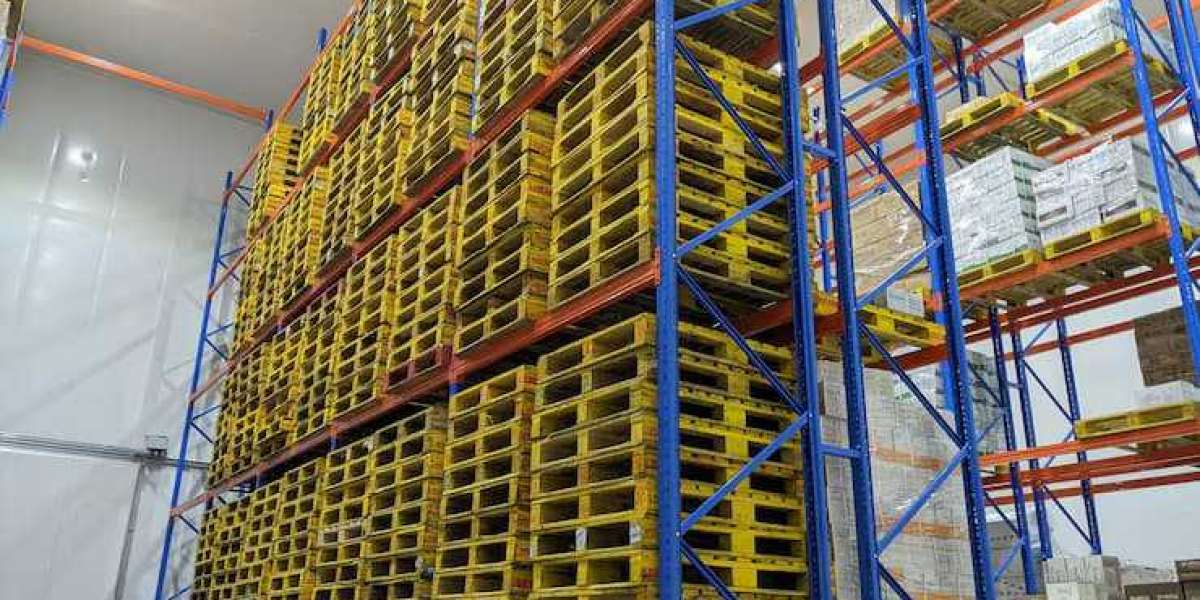In the competitive world of logistics and warehousing, efficiency is key. An organized and well-structured warehouse can significantly impact a business's operational success. One of the most effective ways to boost efficiency and optimize space is by upgrading to a new warehouse racking system. This article explores the benefits of upgrading your racking systems, the various types available, and the essential steps to ensure a successful transition.
The Importance of a Modern Warehouse Racking System
As businesses grow and evolve, their storage needs often change. Older racking systems may become outdated, leading to inefficiencies, safety hazards, and wasted space. Upgrading to a modern warehouse racking system can provide numerous benefits, including:
1. Increased Storage Capacity
A new racking system can maximize vertical space in a warehouse, allowing businesses to store more inventory without expanding their footprint. By utilizing taller racks and optimizing the layout, companies can significantly increase their storage capacity. This is especially important in urban areas where space is at a premium.
2. Improved Accessibility
Modern racking systems are designed to enhance accessibility. By implementing features such as adjustable shelves and wider aisles, warehouses can facilitate easier access to products. This improvement reduces the time employees spend searching for items and speeds up the picking and packing processes. Improved accessibility can lead to increased productivity and better customer service.
3. Enhanced Safety
Safety is a top priority in any warehouse environment. Upgrading to a new racking system allows businesses to incorporate the latest safety features, such as reinforced structures, safety pins, and anti-collapse measures. A well-designed racking system minimizes the risk of accidents, protecting both employees and inventory. Additionally, a safer work environment can lead to lower insurance premiums and reduced liability risks.
4. Flexibility and Adaptability
Modern racking systems offer greater flexibility to adapt to changing inventory needs. For instance, adjustable shelving allows businesses to modify the configuration based on the size and type of products being stored. This adaptability is crucial for companies that experience seasonal fluctuations in inventory or changes in product lines.
5. Cost Efficiency
Though upgrading a racking system requires an upfront investment, the long-term savings can be substantial. Improved organization and accessibility can lead to higher productivity and lower labor costs. Additionally, modern racking systems are often designed to accommodate more inventory, reducing the need for costly warehouse expansions.
Types of Warehouse Racking Systems
When considering an upgrade, it's essential to understand the various types of warehouse racking systems available. Each type has its unique features and advantages, making them suitable for different storage needs.
1. Selective Racking
Selective racking is one of the most common types of racking systems used in warehouses. This system allows easy access to all stored items, making it ideal for businesses with a diverse inventory. Selective racking is typically constructed from steel and features adjustable shelves. Its straightforward design makes it a cost-effective choice for many warehouses.
2. Drive-In Racking
Drive-in racking systems maximize storage density by allowing forklifts to drive directly into the rack structure. This system is particularly beneficial for businesses with high-density storage needs and a limited range of products. However, it does require careful management of inventory to prevent issues with accessing older stock.
3. Push-Back Racking
Push-back racking combines the benefits of selective and drive-in racking systems. This system allows for high-density storage while still providing some accessibility. Inventory is stored on carts that push back on rails, enabling easy access to the products at the front. Push-back racking is ideal for warehouses that need to store multiple pallets of the same product.
4. Pallet Flow Racking
Pallet flow racking systems utilize gravity to facilitate the movement of pallets through the racking system. This design allows for first-in, first-out (FIFO) inventory management, making it ideal for perishable goods or items with a limited shelf life. The system employs a series of inclined rollers that allow pallets to flow from the loading side to the picking side.
5. Cantilever Racking
Cantilever racking is specifically designed for storing long or bulky items, such as lumber, pipes, or furniture. This system features arms that extend from a vertical frame, allowing for easy access to goods. Cantilever racking is highly customizable and can accommodate various lengths and weights.
Steps to Successfully Upgrade Your Racking System
Upgrading a warehouse racking system is a significant undertaking that requires careful planning and execution. Here are the essential steps to ensure a successful transition:
1. Assess Your Current Needs
Before upgrading, it's crucial to assess your current storage needs. Analyze your inventory and identify any inefficiencies in your existing system. Consider factors such as the types of products you store, the volume of inventory, and the flow of operations. This assessment will help you determine which type of racking system best suits your business.
2. Consult with Experts
Engaging with warehouse design experts or racking system providers can provide valuable insights. These professionals can help you identify the best racking solutions based on your specific needs and constraints. They can also assist with designing an optimal layout to maximize space and efficiency.
3. Plan the Layout
Once you have determined the right type of racking system, it's time to plan the layout. Consider factors such as aisle widths, accessibility, and the flow of goods. A well-planned layout can significantly enhance operational efficiency and minimize bottlenecks.
4. Budget for the Upgrade
Establishing a budget for the upgrade is essential. Take into account the costs associated with purchasing the new racking system, installation, and any necessary renovations to the warehouse. While it's important to stick to your budget, also consider the long-term savings and benefits of investing in a quality racking system.
5. Schedule the Installation
Coordinating the installation of the new racking system is critical to minimizing disruptions to daily operations. Depending on the size and complexity of the installation, it may be necessary to schedule the work during off-peak hours or over a weekend.
6. Train Employees
After the installation is complete, it's vital to train employees on how to use the new racking system effectively. This training should include proper loading and unloading techniques, safety protocols, and best practices for maintaining the system. Ensuring that all employees are well-informed will help maximize the benefits of the new racking system.
7. Implement Regular Maintenance
Once the new racking system is in place, implementing a regular maintenance schedule is crucial. Routine inspections will help identify any potential issues before they escalate, ensuring the longevity and safety of the racking system.
Conclusion
Upgrading your warehouse with a new warehouse racking system can yield significant benefits, from increased storage capacity and improved accessibility to enhanced safety and cost efficiency. By understanding the various types of racking systems available and following a systematic approach to upgrading, businesses can create a more organized and productive warehouse environment.
For companies looking to transform their storage solutions and elevate their warehouse operations, Dalvie Systems offers the expertise and support necessary for success. Contact Dalvie Systems today to discover how they can assist you in implementing effective racking solutions tailored to your specific needs.







